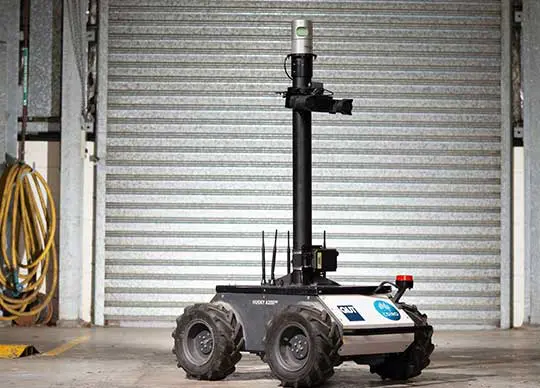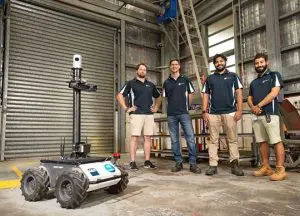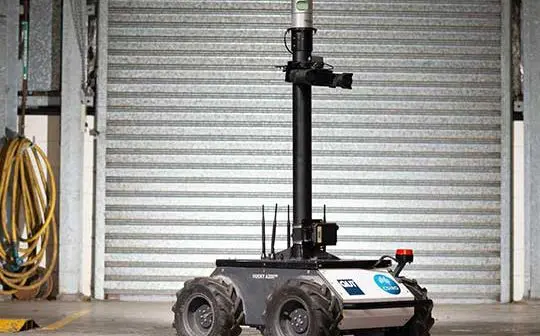
QUT researchers have successfully demonstrated technology that could be used to drive the first Australian-made rover to land on the Moon from 2026.
Since October, when the Australian Space Agency signed an agreement with NASA to send an Australian rover to the Moon as part of the Artemis program, the race has been on with researchers around the country to develop a rover capable of picking up and transferring broken rock and Moon dust.
QUT researchers, led by Associate Professor Thierry Peynot, have developed a navigation and perception system to support a small, autonomous, 20kg rover.
In a trial of the system at CSIRO’s new In-Situ Resource Utilisation Facility – established by the national science agency to test technologies in Moon-like environments – the QUT researchers demonstrated the rover’s autonomous navigation and perception system.
 The testing of the rover is part of a broader collaboration between QUT and Boeing, in which Boeing is providing expertise in aerospace engineering to advance the testing including demonstrating potential methods to execute space missions.
The testing of the rover is part of a broader collaboration between QUT and Boeing, in which Boeing is providing expertise in aerospace engineering to advance the testing including demonstrating potential methods to execute space missions.
Professor Peynot said the research challenge to develop an Australian-made was enormously exciting.
“QUT has a robust track record in developing autonomous vehicle technology with companies like Caterpillar and Rheinmetall,” Professor Peynot said.
“These technologies typically support operations in remote, harsh or unsafe locations.
“But the lunar environment is an order of magnitude more challenging: no atmosphere; very fine, charged, and reactive dust that sticks to everything; temperature variations of more than 300 degrees, and 200 times the radiation of Earth.
“Developing solutions that can operate let alone survive in this unhospitable environment is monumentally challenging.”
QUT Vice-Chancellor Professor Margaret Sheil said the collaboration between QUT and Boeing in developing lunar technology was part of QUT’s broad vision of expanding its real-world research into space.
“QUT has long been a leading centre of robotics research in Australia, with the QUT Centre of Robotics conducting world-leading research into intelligent robotics,” Professor Sheil said.
“We are involved in key research projects in the space industry, including tackling one of the ultimate questions of science in seeking signs of life elsewhere in the solar system with NASA’s Mars Perseverance Rover, and working with international partners on new upcoming space missions.
“We are very proud of our international reputation as the university for the real world, and through projects like this we rising to the challenge of being Australia’s leading space university too.”
In February this year, a team of QUT researchers and students celebrated the touchdown of NASA’s Mars Perseverance Rover, enabling them to start their science mission of looking for signs of ancient life. QUT’s Dr David Flannery is a member of the Perseverance science team and a Long-Term Planner for the mission.
In June, QUT Centre for Robotics researchers, led by centre director Distinguished Professor Peter Corke, announced they had joined the push to take humanity back to the Moon in designing and demonstrating a logistics robot for space applications.
Professor Corke said these projects were breaking new boundaries, by taking QUT robotics experts to space, but they were built on years of research into developing robotic solutions to real-world problems.
“The project, with Canadian-based space technology company MDA, to design a logistics robot prototype that may be used inside the International Space Station (ISS) or the Lunar Gateway, can be traced back to our Amazon Robotics Challenge winning robotic grasping technology,” Professor Corke said.
“Queensland is the centre of Australia’s robotics research industry, Brisbane is the centre of that industry, and QUT’s Centre of Robotics is at the heart of it all.
“These projects are major steps as we expand our vision to a research centre that is focused on robotics for the real-world and beyond.”





